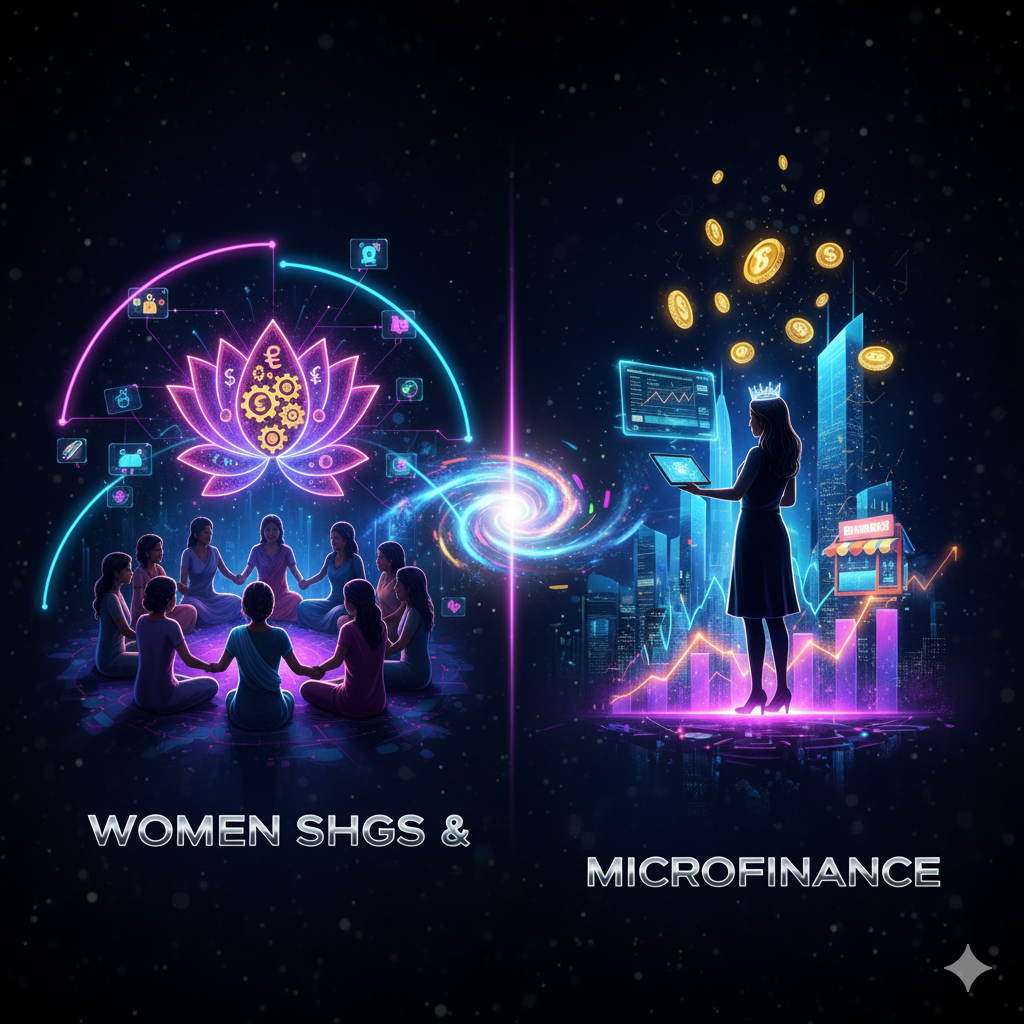The Public Distribution System (PDS) is one of the most significant and long-standing government programs aimed at ensuring food security and addressing the problem of hunger in India. Launched in 1947, the PDS has evolved over the decades to cater to the changing needs of the population. It plays a crucial role in stabilizing food prices and ensuring that essential food items, such as wheat, rice, and sugar, are available to the masses at affordable prices. The PDS has been instrumental in providing food security to millions, particularly the economically disadvantaged sections of society. This essay delves into the effectiveness of the PDS in stabilizing food prices and making food accessible to consumers at affordable rates.
The Genesis of the Public Distribution System (PDS)
The origins of the PDS can be traced back to the post-independence period when India faced a combination of food scarcity, famines, and economic challenges. The government established the system to address these issues and ensure that essential food items reached the needy at reasonable prices. Initially, the PDS was focused on urban areas and aimed at providing relief during food shortages, but over time, it expanded to rural areas to cater to a wider demographic.
The PDS primarily aimed to provide food grains to low-income families. By the 1960s, during the Green Revolution, the system was further strengthened with an increase in the production of wheat and rice. The government, through the Food Corporation of India (FCI), began procuring and distributing these staples to ensure food security.
Role of PDS in Stabilizing Prices
One of the key objectives of the PDS is to stabilize food prices, particularly during periods of inflation or food scarcity. By acting as a buffer stock, the government ensures that prices of essential food commodities do not rise uncontrollably, providing relief to consumers, especially those in the lower-income brackets.
1. Buffer Stocks and Price Stabilization
The government maintains buffer stocks of food grains, which are procured during the harvest season when food supply is abundant. These stocks are then released into the market during times of scarcity, such as droughts, floods, or other disruptions. This controlled release helps in preventing price spikes, as it increases the available supply in the market and provides an alternative source of food.
In times of high inflation or market volatility, the PDS has proven to be an effective tool in stabilizing prices. For instance, during periods of poor monsoon or crop failure, when the supply of food grains in the market drops, the release of buffer stock through the PDS prevents prices from skyrocketing.
2. Subsidized Food Distribution
The PDS ensures that food is available to the population at subsidized rates. For instance, rice, wheat, and other essential items are distributed at much lower prices compared to the open market. By offering food at affordable rates, the PDS makes it possible for low-income groups to access these commodities even when prices in the open market are high.
The National Food Security Act (NFSA) of 2013 made the PDS a universal entitlement for two-thirds of India’s population, providing food grains to eligible households at highly subsidized prices. This has been crucial in preventing price hikes from disproportionately affecting the poor, especially during inflationary periods.
Accessibility and Affordability of Food
The PDS’s role in making food accessible and affordable cannot be overstated. In a country as large and diverse as India, ensuring that food reaches even the remotest corners of the country is a monumental task. The system, although not without flaws, has managed to reach millions of households across urban, semi-urban, and rural areas, making food security a more attainable goal for those at the bottom of the economic pyramid.
1. Reach to the Marginalized Sections
The PDS plays a vital role in reaching the most marginalized sections of society, particularly in rural areas where access to food markets is often limited. The system ensures that these communities, who may otherwise face food insecurity due to factors like low income, lack of purchasing power, or geographical isolation, receive food at subsidized rates.
The inclusion of Scheduled Castes (SC), Scheduled Tribes (ST), and Below Poverty Line (BPL) families in the PDS has been a significant step towards inclusive food security. The government provides these households with ration cards, which grant them access to essential food grains like rice, wheat, and sugar at highly subsidized prices. This system ensures that those most in need can access food, even during periods of economic distress.
2. Universalization under NFSA
The National Food Security Act (NFSA), implemented in 2013, expanded the scope of the PDS by providing food grains to two-thirds of India’s population. This move aimed to increase accessibility by covering a wider population, particularly those living in rural and remote areas. Under the NFSA, food is distributed at subsidized prices (₹3 per kg of rice, ₹2 per kg of wheat, and ₹1 per kg of coarse grains), ensuring that food is affordable even for the most vulnerable groups.
The inclusion of nutritious food items like pulses and fortified wheat flour in the PDS is another step toward improving the quality of food accessible to the poor. This universalization of food distribution through the PDS has played a critical role in fighting hunger and malnutrition, making food accessible and affordable to millions.
Effectiveness and Challenges of the PDS
1. Success Stories
Despite its challenges, the PDS has been successful in providing food security to millions of people. In states like Tamil Nadu, Chhattisgarh, and Andhra Pradesh, the PDS has shown remarkable success in ensuring food availability at affordable prices, with minimal leakages and corruption. These states have adopted efficient systems of distribution and monitoring, leading to better outcomes in terms of food security and poverty reduction.
2. Challenges in the System
While the PDS has been instrumental in making food available and affordable, it is not without its flaws. One of the major issues plaguing the system is the problem of leakage and diversion. Studies have shown that a significant portion of the food grains meant for distribution often ends up in the black market or is sold at higher prices. This undermines the system’s effectiveness in reaching the intended beneficiaries.
Additionally, the system faces challenges related to poor infrastructure, including inadequate storage facilities and transportation networks. These issues result in food wastage and delays in distribution, especially in remote and difficult-to-reach areas.
Another challenge is the identification of beneficiaries. Although the government has made efforts to digitize the system and ensure transparency, the identification process often excludes eligible beneficiaries, especially those who are marginally above the poverty line. The presence of ghost beneficiaries (non-existing individuals) also poses a threat to the integrity of the system.
Reforms and Future Directions
The PDS has been the subject of numerous reforms aimed at improving its effectiveness. The introduction of digital technology, such as the use of Aadhaar-based authentication, has helped reduce leakages and ensure that food reaches the correct beneficiaries. Moreover, the introduction of direct benefit transfer (DBT) schemes is being tested in some regions to transfer subsidies directly to beneficiaries, further reducing inefficiencies.
In the future, the focus should be on improving the efficiency of food distribution by addressing issues like corruption, improving storage facilities, and enhancing logistical capabilities. States that have successfully implemented reforms should be used as models to replicate these practices across the country.
Moreover, there is a need to integrate the PDS with nutrition security, ensuring that not only calories but also essential micronutrients are made available to vulnerable populations. A diversified food basket that includes pulses, vegetables, and fruits will help in addressing issues of malnutrition.
Conclusion
The Public Distribution System has undoubtedly been one of the most effective tools in India’s efforts to ensure food security and stabilize food prices. By providing subsidized food grains to millions of people, it has helped mitigate the impact of food price inflation and has played a crucial role in ensuring food accessibility for marginalized populations. While the system has faced challenges related to inefficiencies and leakages, its impact on food security cannot be overstated.
As India continues to face the dual challenges of population growth and climate change, the PDS will remain a critical component of the country’s strategy to achieve sustainable food security. With continued reforms, improvements in infrastructure, and a focus on nutrition, the PDS can fulfill its potential in ensuring that no one goes hungry, making food both accessible and affordable to all.




